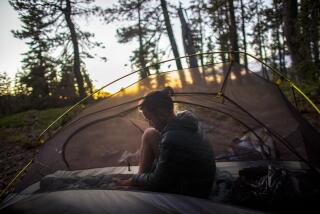Family travel five: Play it safe heading to great outdoors
Heading into the back country, to your favorite national park or recreation area? Before you go, give your skills, gear and local intel a tuneup. You’ll want to play it safe when heading into the great outdoors with your family.
Here are five ideas to consider:
1. LEARN ABOUT MOUNTAIN LIONS
Mountain lion attacks on people are rare. Yet, recently, interactions have increased. Experts believe the shift is due, in part, to humans moving closer to lion habitat, an increase in deer populations (their prey), and more hikers, bikers and runners sharing trails with lions.
If you venture into lion country, experts recommend exploring in groups and making plenty of noise to avoid a surprise. Carry a walking stick and keep children close at all times. Should an encounter occur, do not run. Stay calm. Pick up any children and talk firmly as you slowly back away. Do everything you can to loom large, raising your arms, opening a coat while not blocking a lion’s escape route. If the lion acts aggressively, fight back with rocks, sticks or whatever you can find without getting low or turning your back.
https://www.mountainlion.org/
2. SNAKE SMARTS
Hiking, climbing and camping in many parts of the country mean a snake encounter is possible. Make sure kids know to steer clear of anything that resembles a snake. According to the University of Arizona Poison and Drug Information Center, more than half of those bitten intentionally provoked the snake in some way. Stay on hiking trails and keep hands and feet away from wood and rock piles, deep grass or crevices. Carry a flashlight and wear shoes after dark. “Time is tissue,” experts say. So if a bite does occur, call 911 and seek medical attention immediately.
Contact: azpoison.com.
3. BE BEAR AWARE
Your goal during a hiking, fishing or camping experience is to avoid getting up close and personal with a bear. So while making plans, inquire about recent bear activity at your intended destination. Research shows that bear spray is effective, so have yours at the ready and know how to use it. Travel in groups of three or more and sing, tell stories or take turns shouting “Hey, bear!” to let wild creature know you are in the area. Hike during daylight hours, stay on trails and avoid berry patches and animal carcasses. Look for signs of bear activity including scat, tracks or overturned rocks. When camping, keep your tent and spaces clean and free of odors. (Remind the kids that stashing candy bars in sleeping bags is not a good idea.) Don’t sleep in clothes you cooked in. Be sure to hang food and trash away from sleeping areas or in bear-proof containers.
Contact: NPS.gov/Yell; grizzlydiscoveryctr.org/education/bear-awareness-hiking-camping/
4. DON’T LET LIGHTNING STRIKE
According to the National Oceanic and Atmospheric Administration, more than 400 people are struck by lightning each year in the U.S. Teach the kids that “when thunder roars, go indoors.” When planning an activity, have a safety plan and know where you will meet should a storm develop. Watch for darkening skies, flashes of lightning and shifting and strengthening wind patterns. If you hear thunder, even at a distance, it is time to move to a sturdy building or hard-topped metal vehicle with windows closed, advises NOAA. Stay away from tall, isolated trees, utility polls or open areas. Avoid wires and metal fencing. Wait for 30 minutes after the last thunderclap to move outside. If someone is struck by lightning, call 911 and get immediate medical attention.
Contact: nws.noaa.gov/os/lightning/resources/lightning-safety.pdf; weather.gov/nwr
5. DO THE STINGRAY SHUFFLE
If you are headed to the beach, be sure the whole family practices the Stingray Shuffle before plunging into the sea. Stingrays bury themselves under a thin blanket of sand for protection. By shuffling into the water, you’ll create a vibration and the creature will be alerted and will move off in a different direction. Stingrays are also most active at 11 a.m. and 3 p.m., prime beach time, so ask the lifeguard or your resort’s front desk about stingray activity before splashing into the surf. Should a sting occur, use hot water to clean the wound and seek medical attention. The Stingray City sandbar, home to the Southern Stingray, is a popular attraction in the Cayman Islands.
Contact: caymanislands.ky/activities/attractions/stingraycity.aspx
(Lynn O’Rourke Hayes (www.LOHayes.com) is an author, family travel expert and enthusiastic explorer. Gather more travel intel on Twitter @lohayes, Facebook, or via FamilyTravel.com)
(c)2019 Lynn O’Rourke Hayes
Distributed by Tribune Content Agency, LLC.
More to Read
Sign up for The Wild
We’ll help you find the best places to hike, bike and run, as well as the perfect silent spots for meditation and yoga.
You may occasionally receive promotional content from the Los Angeles Times.






